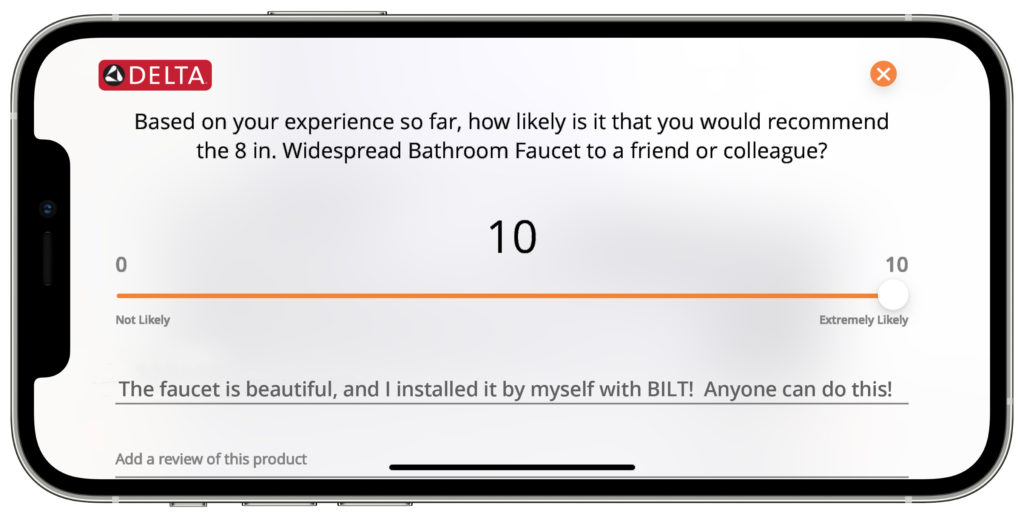With a surge of online shopping since 2020, customers have become used to making purchases without having seen or tested a product for themselves. Instead, they increasingly rely on the experiences and feedback of others. As a result, the importance of online ratings and reviews has skyrocketed in the past few years. According to recent research by McKinsey & Company, the volume of ratings and reviews increased 40%-80% at the height of the pandemic.
Why is user-generated feedback so important? It offers a form of social proof that your company simply can’t provide for customers—feedback from actual users of the product. Marketing dollars cannot resuscitate a product with a low star rating and damaging reviews. As the worst months of the pandemic fade from memory, retailers rely more than ever on customer feedback because 94% of consumers say online ratings and reviews are the top factors influencing their purchase decisions. Those surveyed said customer feedback had an even greater impact than brand, price, marketing imagery, shipping costs, or recommendations from family and friends.
Do Higher Ratings Really Equal Higher Sales?
The most widely used feedback system is the 5-star rating, and according to the McKinsey report, higher star ratings result in increased sales. Researchers analyzed reviews from the 70 highest-selling product categories and found a positive correlation between star ratings and sales in 55 of those categories.
Also:
- Even a 0.2-star bump could result in >2.5x sales
- 95% of units sold had a 3.5-star rating or higher
- Products with 3 or 4-stars have 3x higher sales than 1-star products
- Products above 4 stars showed the greatest increase in sales
As user-generated content becomes increasingly important in the competitive retail landscape, brands that focus on improving ratings and authentic reviews can expect to see an increase in profits.
“In this environment, retailers and CPG companies must give greater attention to star ratings and online buzz as they build a post-pandemic strategy.”
McKinsey & Company
What Does This Mean for Your Business?
When it comes to customer feedback, a 4 or 5-star rating makes a significant difference. To appreciate how important these higher star ratings are today, you must look at the customer experience and the level of excellence your products deliver.
“One product experienced incremental growth of only 4 percent when its rating increased from two to three stars. But when the rating went even higher, from three stars to four, sales rose by 24 percent.”
McKinsey & Company
Three ways to improve product ratings:
1. Make it easy for customers to give feedback
Ask your customers directly. Whether it’s through email, SMS, or your website, it’s important to ask for ratings and reviews when customers are most likely to talk about the product and brand by name—within 24 hours of receiving and setting up their product.
2. Improve the customer experience
According to a Qualtrics study, 80% of customers say they have switched brands because of poor customer experience. Many product reviews not only evaluate the product itself, but also the overall buyer experience provided by the brand.
To improve the customer journey from start to finish, each touchpoint should be optimized—from website UX and checkout cart speed, to shipping, delivery, unboxing, product set up, and usage.
Even if the product is outstanding, a poor customer experience may result in a lower star rating. Take the review below for example:

One-star review on a desk due to poor assembly experience
The customer is satisfied with the product and the price point. However, the disappointing assembly experience resulted in a 3-star rating. A single negative episode in the customer journey can affect product ratings, but the better the overall customer experience, the more likely customers will be to leave a complimentary rating and review.
3. Use feedback to make improvements
If you have products hovering on the lower end of the scale—3 stars or below—it may be time to put effort toward improving ratings to increase sales. The good news is poor customer reviews are helpful in revealing where improvements need to be made. Whenever possible, contact customers who leave poor ratings or reviews directly to make things right. Most importantly, be sure to channel feedback to the appropriate team within your organization so they can make improvements as quickly as possible.
As the customer experience becomes an increasingly important differentiator in star ratings and overall sales, it’s worth examining the customer journey your brand provides. Make sure you are aware of any pain points in the shopping, buying, delivery, and set-up of every product in your line. The return on investment will be well worth it when the improved ratings result in increased sales.



